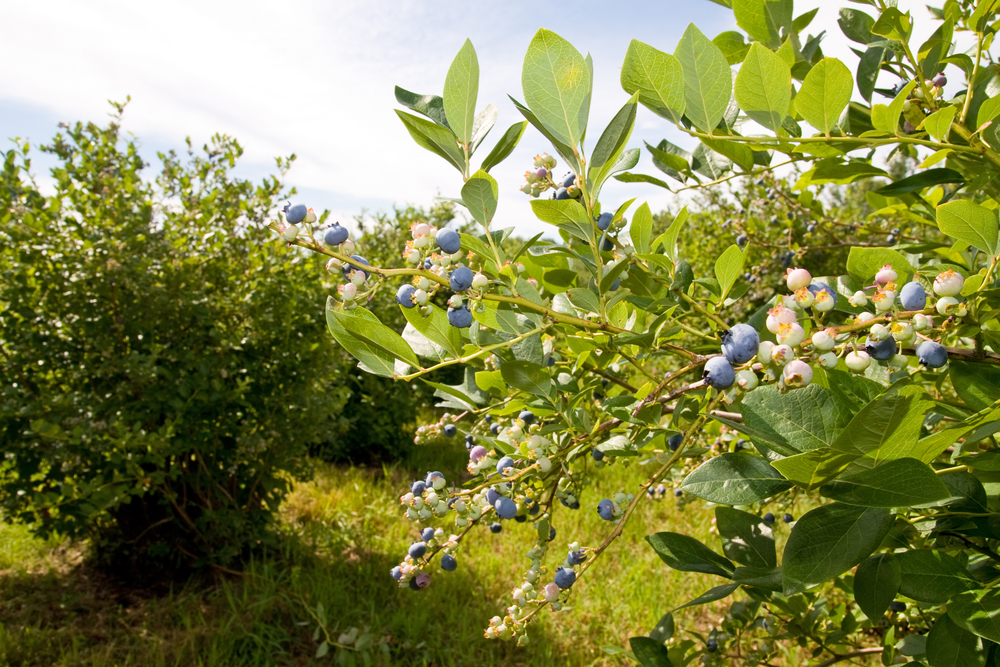By Frank Giles The early blueberry season was highlighted during last weekend’s Southeast Regional Fruit & Vegetable Conference in Savannah, Georgia. One topic kept trending for growers in attendance, too many blooms, way too early. Some growers are reporting up to 30% bloom in Georgia. That makes for a challenging winter for producers hoping to avoid hard freezes as the …
Blueberry Market Trends and Implications for Growers
By Kimberly L. Morgan The U.S. commercial blueberry industry value of utilized production was $933 million in 2020. An unchanging trend since 1970, the U.S. consumer continues to eat less than 40% of the federal dietary guidelines of fruits and vegetables [U.S. Department of Agriculture (USDA), 2021] and only 12% meet fruit intake requirements (Seung Hee Lee-Kwan et al., 2017). …
Harvests, Sanitation Key to Preventing Yeast Rot in Blueberries
By Clint Thompson Timely harvests and sanitation practices are two ways blueberry growers can avoid yeast rot becoming a major problem in 2022. The disease devastated South Georgia’s rabbiteye blueberries in 2020. Phil Harmon, professor and Extension plant pathologist at the University of Florida, says there’s not a viable chemical option for farmers to implement. Management will have to involve …
Blueberry App Puts Information at Growers’ Fingertips
By Doug Phillips The University of Florida Institute of Food and Agricultural Sciences (UF/IFAS) blueberry breeding program has developed a phone app resource that includes several tools for Florida blueberry growers. It is available for download on both iOS and Android systems. Blueberry breeder Patricio Muñoz developed the idea for the UF/IFAS Blueberry Growers Guide app. He had a vision …
Blueberry Management Tips for January
January remains a busy time of year for Florida blueberry farmers managing this year’s crop. The University of Florida Institute of Food and Agricultural Sciences (UF/IFAS) reminds growers that it is essential to monitor for disease development, especially with Botrytis flower blight. Once bloom occurs, growers need to monitor for the disease during cool and wet periods. Producers need to …
Blooming Problem: Warmer Temps Leading to Early Blueberry Blooms
By Clint Thompson Warmer temperatures in previous months led to earlier blooms for blueberry plants in the Southeast. That’s not good news for farmers, says Georgia producer Russ Goodman, co-owner of Cogdell Berry Farm in Clinch and Lanier counties. “We’ve got a lot more bloom right now than we would want I can tell you that. It’s not a good …
Algal Stem Blotch Becoming Widespread in Georgia
By Jonathan Oliver Wet weather during 2021 contributed to the development of several significant disease issues on Georgia blueberries. Throughout the summer of 2021, rainfall across Georgia’s blueberry production belt was considerably above normal, and issues with phytophthora root rot and algal stem blotch were widely reported across southern Georgia during late summer and fall. Phytophthora root rot is one …
Blueberry: Behind the Superfood Status
By Ulschan Bathe and Bryan Leong When people think of superfoods, one of the first things that comes to mind is blueberries. Blueberries are a perennial crop native to North America with global production of around 1 million tons. Their commercial cultivation started in the early 1900s, and breeders have been developing better varieties ever since. The unique look, smell …
Looking Ahead: UF/IFAS’ Resources Help Blueberry Growers Navigate Season
By Clint Thompson Florida blueberry growers have resource tools to help them navigate through diseases and pests leading up to harvest time over the next couple of months, says Doug Phillips, University of Florida Institute of Food and Agricultural Sciences (UF/IFAS) blueberry Extension coordinator. “We’ve got the new 2022 version of the Blueberry IPM guide that’s out. We’ve also got …
Fertilization of Blueberries in Pine Bark Beds
By Doug Phillips and Jeffrey G. Williamson Blueberries have specific nutrient requirements that differ from other horticultural crops. They have shallow root systems and no root hairs, which limits the ability to take up nutrients. Blueberries grow best in acidic soils (ideal pH range of 4.5 to 5.5) with at least 3% organic matter and prefer the ammonium form of …











